Do you suspect that your vehicle has a bad EGR valve and you are wondering if it’s possible to drive with a bad EGR valve?
Are you worried that driving with a bad EGR valve might cause engine damage? I have had this issue and I am going to share my experience with a bad EGR valve.
In short, it shouldn’t cause any problems UNLESS it is completely stuck open which is very rare.
A stuck open EGR valve can cause stalling at idle, no start, rough idle, popping sound, engine misfire, and check engine light.
- Key Takeaway
- Can I Drive With a Bad EGR Valve?
- How Many Miles Can You Drive With a Faulty EGR Valve
- What Does an EGR Do?
- How Do I Know If My EGR Valve Is Working?
- What Causes EGR Valve To Go Bad
- What Happens If You Don’t Fix The EGR Valve?
- FAQs
- Q: What are the symptoms of a bad EGR valve?
- Q: What can cause a bad EGR valve?
- Q: Can a bad EGR valve cause a misfire?
- Q: How does an EGR valve work?
- Q: Is it safe to drive with a bad EGR valve?
- Q: How do I replace the EGR valve?
- Q: What are the types of EGR systems?
- Q: Can a bad EGR valve cause damage to the engine?
- Q: How does a faulty EGR valve affect engine performance?
- In Conclusion
Key Takeaway
- Yes, you can drive with a bad EGR valve, but it can lead to rough vehicle performance, potential engine damage, and an illuminated check engine light, so it’s generally not recommended.
- An EGR (Exhaust Gas Recirculation) valve helps reduce the vehicle’s nitrogen oxide emissions by recirculating a portion of the exhaust gas back into the engine cylinders for combustion, thereby lowering combustion temperatures and improving overall engine efficiency.
Can I Drive With a Bad EGR Valve?

Technically, you can drive your vehicle with a bad EGR valve, but your vehicle will run rough, shake at idle, and a check engine light will be illuminated.
Furthermore, if the EGR valve is stuck completely open, it could potentially cause stalling at idle, difficulty starting, or a rough idle. In severe cases, it could lead to major engine damage.
Therefore, if you suspect that your EGR valve might be faulty, it’s best to get your car checked out by a mechanic as soon as possible.
How Many Miles Can You Drive With a Faulty EGR Valve
You can continue to drive your vehicle with a faulty EGR valve for many miles as long as the valve is not stuck completely open. Most of the time, the EGR valve can become clogged and trigger a check engine light but no visible changes are present and the vehicle runs as before.
It is difficult to calculate the exact number of miles you can drive with a faulty EGR valve. This is because the amount of stress and wear your car experiences driving a certain distance will depend on many factors such as type of weather, terrain, and road conditions.
Usually, when the EGR valve starts to fail, a simple cleaning does the job. However, if you continue to drive your vehicle with a faulty EGR valve, you risk damaging the valve and no amount of cleaning will fix it. This is why it is important if you determine that the EGR valve is faulty, go to the mechanic shop and have it looked at.
What Does an EGR Do?
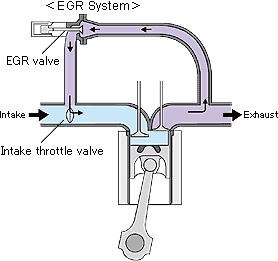
Exhaust gas recirculation – EGR for short – is an important pollutant reduction method in petrol and diesel engines. When an engine runs, the exhaust gas is taken directly after the cylinders.
Then, the EGR valve regulates the subsequent mixing of the exhaust gas with the intake air. This means that less oxygen reaches the cylinder, and less oxygen means a lower combustion temperature.
This way, nitrogen oxide quantities can be reduced by up to 70% as the higher the temperature, the more harmful nitrogen oxides are produced in petrol engines. This can also reduce carbon dioxide emissions and fuel consumption.
The EGR valve is a key component of exhaust gas recirculation. It meters the quantity of exhaust gas that is returned. EGR valves come in various designs and models such as pneumatic, electrical, petrol or diesel applications, or with connections for cooling.
Regulating throttles are used in the intake air system in diesel vehicles. They generate the pressure difference required between the exhaust gas side and intake side to achieve the necessary high exhaust gas recirculation rates.
Air mass sensors are required in diesel engines to regulate exhaust gas recirculation. With their help, the mass of the recirculated exhaust gas is calculated indirectly using the reduction of the intake air.
The EGR coolers have been used since simple exhaust gas recirculation has no longer been sufficient to fulfill emission standards. Just like all components in the EGR system, EGR coolers are exposed to the extreme conditions of the aggressive exhaust gas condensate. They must therefore be manufactured from high-corrosion and temperature-resistant materials.
How Do I Know If My EGR Valve Is Working?
To determine whether your EGR valve is working or is bad, you have to perform a series of tests. These tests might require basic mechanic skills. I am going to explain the EGR valve testing process as simply as I can. Please follow all of the steps and at the end, you will know if your EGR valve is working or not.
1. Scan the vehicle with an OBD scanner

The first thing you should do is scan your vehicle with an OBD scanner. If you don’t have an OBD scanner, you can grab one on amazon.com. Attach the OBD scanner to your vehicle’s main computer and look for any error codes. The error code associated with a faulty EGR is P0401.
2. Locate and remove the EGR valve

The EGR valve is usually located on the upper air intake of your engine. Once you locate it, you will need to remove it in order to perform the tests to see if it’s working or not. You don’t have to remove the upper air intake in order to remove the EGR valve.
3. Perform a visual inspection of the EGR valve
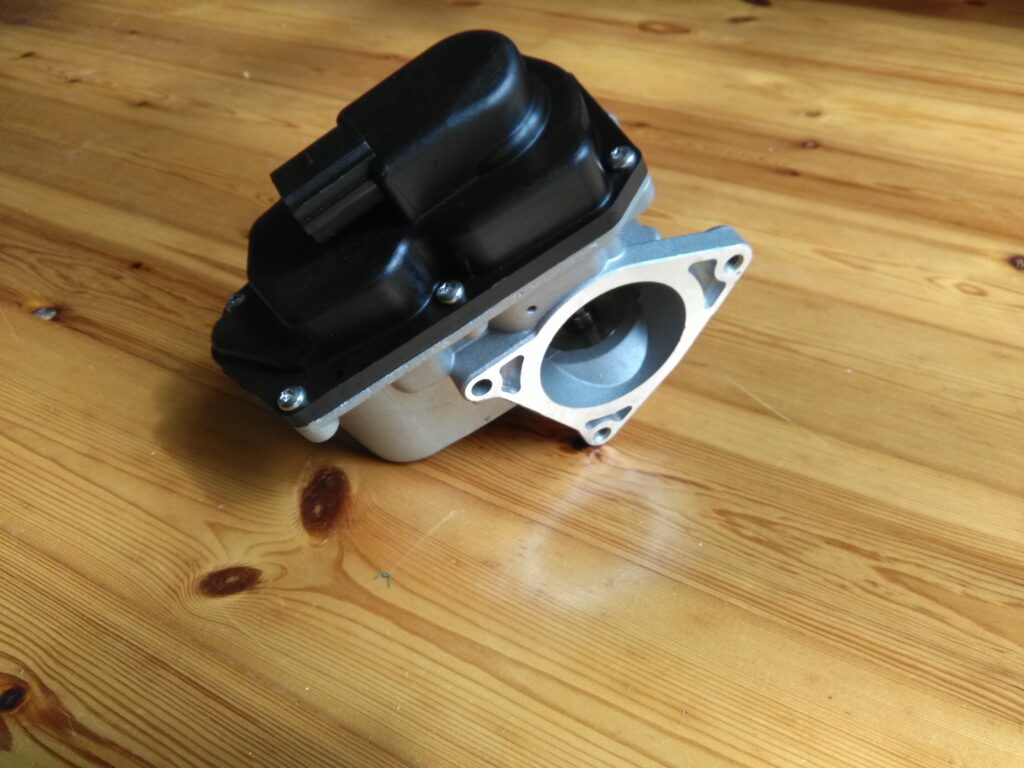
The first test that you need to perform is a visual inspection. Once you remove the EGR valve, clean it with a WD40 and wipe it with a clean towel. You must clean the EGR valve so you can perform a visual inspection and check for cracks and damages. If the EGR valve has no cracks and passes the visual inspection, perform the next step.
4. Perform a vacuum test
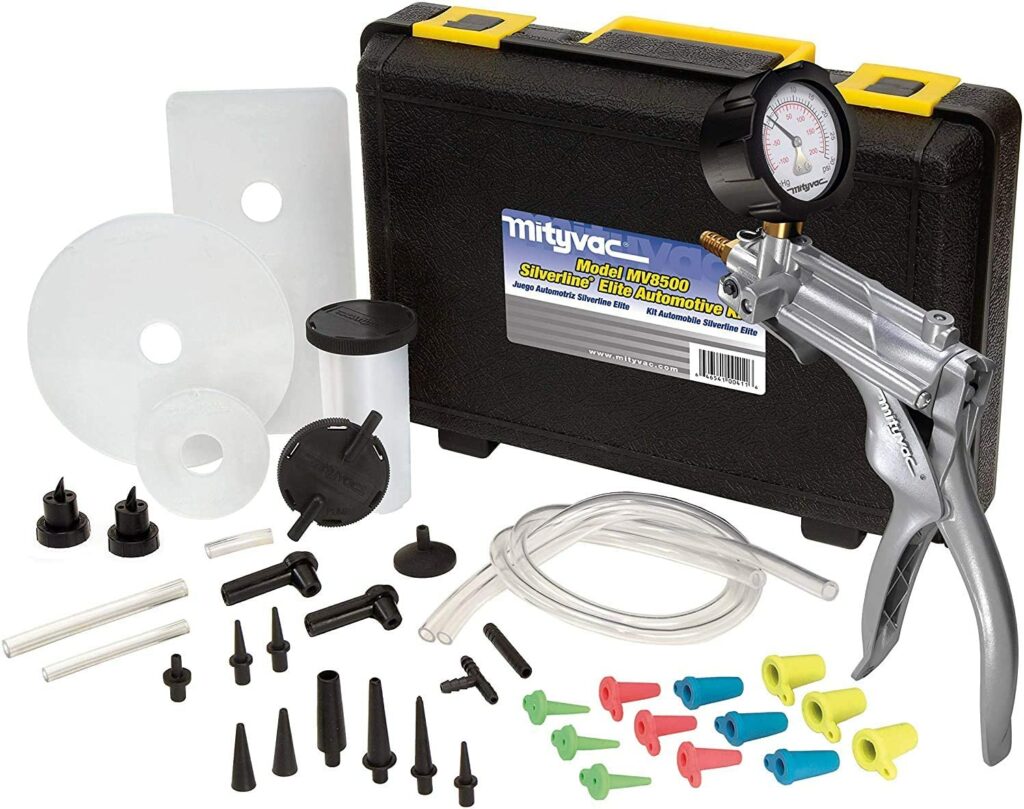
Grab a hand-operated vacuum pump and attach it to the EGR. If you don’t have a vacuum pump, you can grab one on amazon.com. This test will show if your EGR is able to hold a vacuum. An operating EGR valve has to hold a vacuum without dropping off. If your EGR holds a vacuum for a couple of seconds and then drops off, the EGR is faulty.
5. Check for leaks in the EGR valve
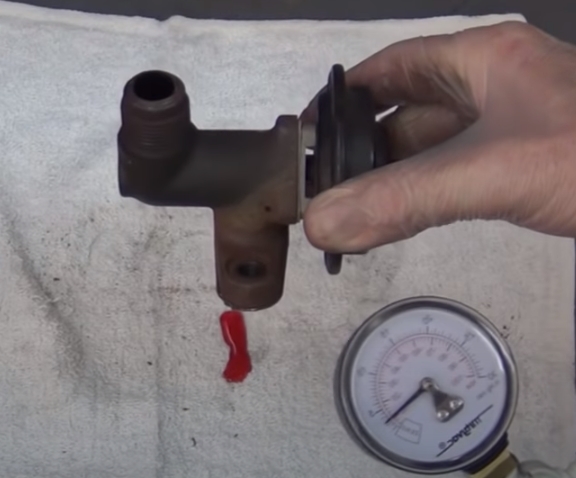
The idea behind this test is to check if the EGR valve is stuck in an open or closed position and if it has any leaks. So, grab any kind of colored liquid. I have tested an EGR valve with ATF fluid before and it works just fine.
Pour some colored liquid into the opening and check if the EGR valve is leaking. It should not leak at this point and that means that the EGR valve is closed. Now, attach the hand-operated vacuum pump and attach it to the EGR valve. Once you start pumping, the EGR valve should open and the liquid should come out of the bottom.
6. Reinstall the EGR valve
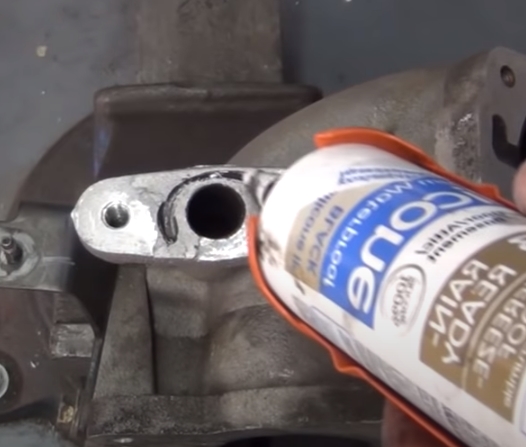
If your EGR valve has failed one of the tests, you will need to get a new EGR valve. You can grab one on amazon.com. If your EGR valve passed all the tests, you can go ahead and reinstall the old one. Some EGR valves don’t have a gasket and you can add a little bit of silicon rubber around the intake hole and bolt it back on.
What Causes EGR Valve To Go Bad
- Carbon buildup: Over time, exhaust gases can leave carbon deposits on the EGR valve, causing it to stick or not open and close properly.
- Age and wear: Like any other mechanical component, EGR valves can wear out over time due to regular use.
- Poor maintenance: Skipping regular vehicle maintenance can lead to a buildup of dirt and grime, which can cause the EGR valve to fail.
- Engine issues: Problems such as engine misfires can cause excessive exhaust, leading to an EGR valve failure.
- Faulty components: Other faulty components in the EGR system, like control solenoids or pressure sensors, can also cause the EGR valve to malfunction.
What Happens If You Don’t Fix The EGR Valve?
If you don’t fix a faulty EGR valve, it can lead to several problems, including poor engine performance and increased emissions.
A bad EGR valve can cause your engine to run inefficiently, leading to reduced power, poor fuel economy, rough idling, and hard starting.
Additionally, because the EGR valve plays a critical role in controlling your vehicle’s emissions, a malfunctioning valve can increase your car’s output of harmful pollutants such as nitrogen oxides says VehicleFreak.
FAQs
Q: What are the symptoms of a bad EGR valve?
A: Some common symptoms of a bad EGR valve include a check engine light illuminated on the dashboard, rough idle, decreased engine performance, an increase in exhaust emissions, and a possible misfire in the engine. If you experience any of these symptoms, it is recommended to have your vehicle checked by a mechanic to determine if the EGR valve is the cause.
Q: What can cause a bad EGR valve?
A: There are several factors that can cause a bad EGR valve. Common causes include carbon buildup in the valve, a malfunctioning EGR solenoid, a faulty vacuum hose, or a stuck EGR valve. In some cases, a bad EGR valve can be caused by a failing or clogged EGR system. A mechanic will be able to diagnose the exact cause of the EGR valve failure.
Q: Can a bad EGR valve cause a misfire?
A: Yes, a bad EGR valve can cause engine misfires. The EGR valve is responsible for recirculating exhaust gases back into the combustion chamber. If the EGR valve is not functioning properly or is stuck in an open position, the excess exhaust gases can disrupt the proper combustion process, leading to misfires. It is important to have a bad EGR valve replaced to prevent further damage to the engine and ensure proper engine performance.
Q: How does an EGR valve work?
A: An EGR valve works by recirculating a portion of the engine’s exhaust gases back into the combustion chamber. This process helps to reduce the formation of harmful emissions such as nitrogen oxide (NOx) by diluting the air-fuel mixture in the combustion chamber. The EGR valve is controlled by the engine’s computer system and is typically opened during low-load conditions, such as idle or cruising, to minimize emissions.
Q: Is it safe to drive with a bad EGR valve?
A: While it is possible to drive with a bad EGR valve, it is not recommended. Driving with a bad EGR valve can lead to decreased engine performance, increased emissions, and potential damage to other engine components. It is best to have the EGR valve replaced as soon as possible to ensure the proper functioning of your vehicle’s EGR system and prevent further issues.
Q: How do I replace the EGR valve?
A: Replacing the EGR valve should be done by a qualified mechanic. The process involves locating the EGR valve, disconnecting any electrical connections or vacuum hoses, removing the mounting bolts, and then installing the new EGR valve. It is important to follow the manufacturer’s instructions and use the correct replacement part for your vehicle’s specific make and model.
Q: What are the types of EGR systems?
A: There are several types of EGR systems, including the basic vacuum-operated EGR system, the electronically-controlled EGR system, and the EGR cooler system. The basic vacuum-operated EGR system uses vacuum pressure to open and close the EGR valve.
The electronically-controlled EGR system uses sensors and solenoids to regulate the EGR valve operation. The EGR cooler system incorporates a heat exchanger to cool the recirculated exhaust gases before they enter the combustion chamber.
Q: Can a bad EGR valve cause damage to the engine?
A: Yes, a bad EGR valve can potentially cause damage to the engine if left untreated. The improper recirculation of exhaust gases can lead to an inefficient combustion process, which can result in engine damage over time. It is best to have a bad EGR valve replaced as soon as possible to avoid further damage and ensure the proper functioning of the engine.
Q: How does a faulty EGR valve affect engine performance?
A: A faulty EGR valve can affect engine performance in several ways. It can cause a decrease in power and acceleration, rough idle, and increased fuel consumption. This is due to the improper recirculation of exhaust gases, which affects the combustion process. Having a faulty EGR valve replaced can help restore the engine’s performance and improve fuel efficiency.
In Conclusion
In conclusion, it is important to maintain the health of your vehicle’s EGR Valve as this component has a big impact on how well your car runs.
A faulty or broken EGR Valve can lead to higher emissions levels and poor engine performance which can cause costly repairs in the future.
